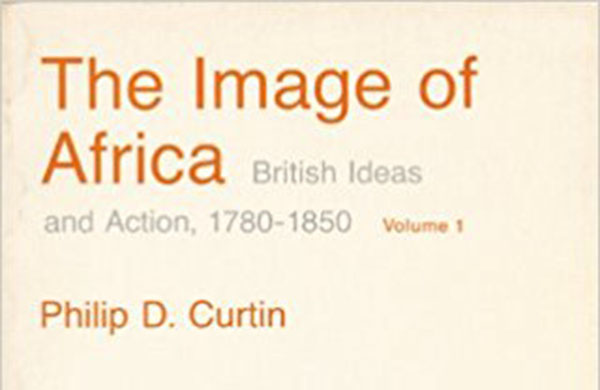During the late 18th and 19th centuries, an African image developed in Europe based on the reports of explorers and the biases of the interpreters.
In 1973, Philip Curtin published a study on the intellectual history of British contact with western Africa titled The Image of Africa. He argues that an image began to emerge out of the haze of the unknown with the first voyages down the West African coast in the 15th century.
Molding the Image of Africa
Many explorers not only saw Africa for what it was, but what it might be. Between 1780 and 1850, explorers, merchants, government officials, and missionaries presented the public with a mass of new information about west Africa. Scholars, scientists, politicians, and humanitarians sought the information from these journeys to buttress their entries or justify their actions.
The “image” was created largely to suit European needs and its sources were Western. Many who wrote about Africa saw what they wanted to see. Curtin argues that the “image” that developed from 1780 to 1850 extended into the middle of the 20th century and caused problems. Many Europeans took it for granted that Africans were barbarians. This was known as “pseudo-scientific racism.”
Racist Assumptions
Shared by a small, culturally cohesive group that was the British ruling class, the image was largely implicit – a body of assumptions to be derived from dispatches, the official pronouncements, the tales of travellers, and the writings of experts. What disagreements there were generally occurred over interpretation and seldom over substance.
He stresses European mortality and the once certain fact it seemed to prove about race, that black men could work in the tropics while white men died; this, he says, was a basic assumption of colonialist thought. He illuminates the confusion between race and culture, for example the mid-19th-century absurdity that certain peoples may look like Negroes but can’t really be true Negroes because they have such highly developed institutions.
Curtin gives some attention to forgotten linguistic heresies, such as that language was the true indication of racial origin, and the deductions from the nature of a language give an indication of inherited differences of character. It was believed that people who had no R in their language were cowards. It was believed that African languages could be improved and made more like Latin.
A pinnacle of cultural chauvinism was reached at the Great Exhibition of 1851. By this time, humanitarianism was in retreat before the laws of political economy; it was being argued that the old idea that an established prince, however barbarous, was still sovereign, should be abandoned because there can be no true treaty between unequals.
Fitting Africa Into a European Mindset
Englishmen, including most travellers, did not ask “What is Africa like?” or “What are Africans like,” but “How does African, and how do Africans, fit into what we already know about the world?” They took it for granted that Africans were “barbarians” who had never known “civilisation,” and went on to consider this “fact” in the light of theories of “barbarism” and “civilisation,” asking whether the “fact” was also related to race. There were different theories of “race,” just as there were different recipes for what Englishmen ought to do in Africa.
Curtin notes a marked lack of “progress” toward a realistic appraisal of Africa in spite of the constant increase of data, a continuing reinterpretation of new perceptions in terms of existing cultural preconceptions, a tendency to respond primarily to the forces in one’s own society and to use Africa as data to be fed into one’s own preoccupations rather than the use Africa as data to be fed into one’s own preoccupations rather than to see Africa as something to be understood in itself.
Reporters went to Africa knowing the reports of their predecessors and the theoretical conclusions already drawn from them. They were insensitive to contradictory data. As a result, British thought about Africa responded very weakly to new data of any kind.
Source:
- Curtin, Philip D. The Image of Africa: British Ideas and Action, 1780-1850, Vol. 1. Madison: The University of Wisconsin Press, 1964.








